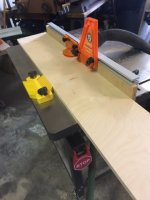I'm interested in hearing from folks about router tables.
I'm leaning towards one of the Incra router table combos. I think they offer high performance and features, but they come at a higher cost and may have an overkill of features that I may not really need.
An alternative is the Kreg Precision Router Table. It looks like a decent table with slightly less features and a lower cost.
I would add a lift to either system, so this would add another ~$300 to the cost. I already have a Bosch router to mount to the table.
I currently have a Bosch portable router table. It's okay, but I use it only occasionally because of its limitations. Adjusting bit height is a PIA and the fence can be wonky. I'm looking to go up a step in performance and improve dust collection.
Thoughts?
NOTE: An OF 1400 is my future, but I'd never mount that beauty to a table. [wink]
I'm leaning towards one of the Incra router table combos. I think they offer high performance and features, but they come at a higher cost and may have an overkill of features that I may not really need.
An alternative is the Kreg Precision Router Table. It looks like a decent table with slightly less features and a lower cost.
I would add a lift to either system, so this would add another ~$300 to the cost. I already have a Bosch router to mount to the table.
I currently have a Bosch portable router table. It's okay, but I use it only occasionally because of its limitations. Adjusting bit height is a PIA and the fence can be wonky. I'm looking to go up a step in performance and improve dust collection.
Thoughts?
NOTE: An OF 1400 is my future, but I'd never mount that beauty to a table. [wink]


